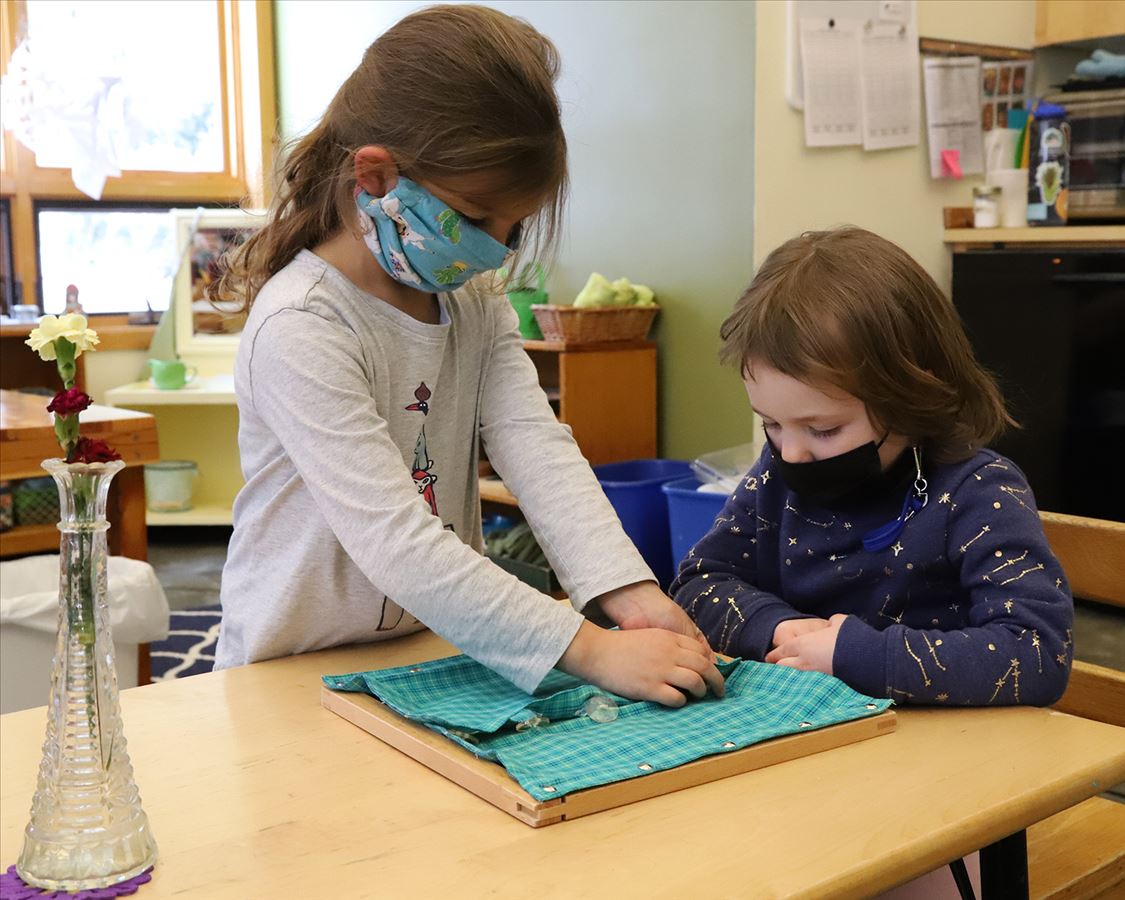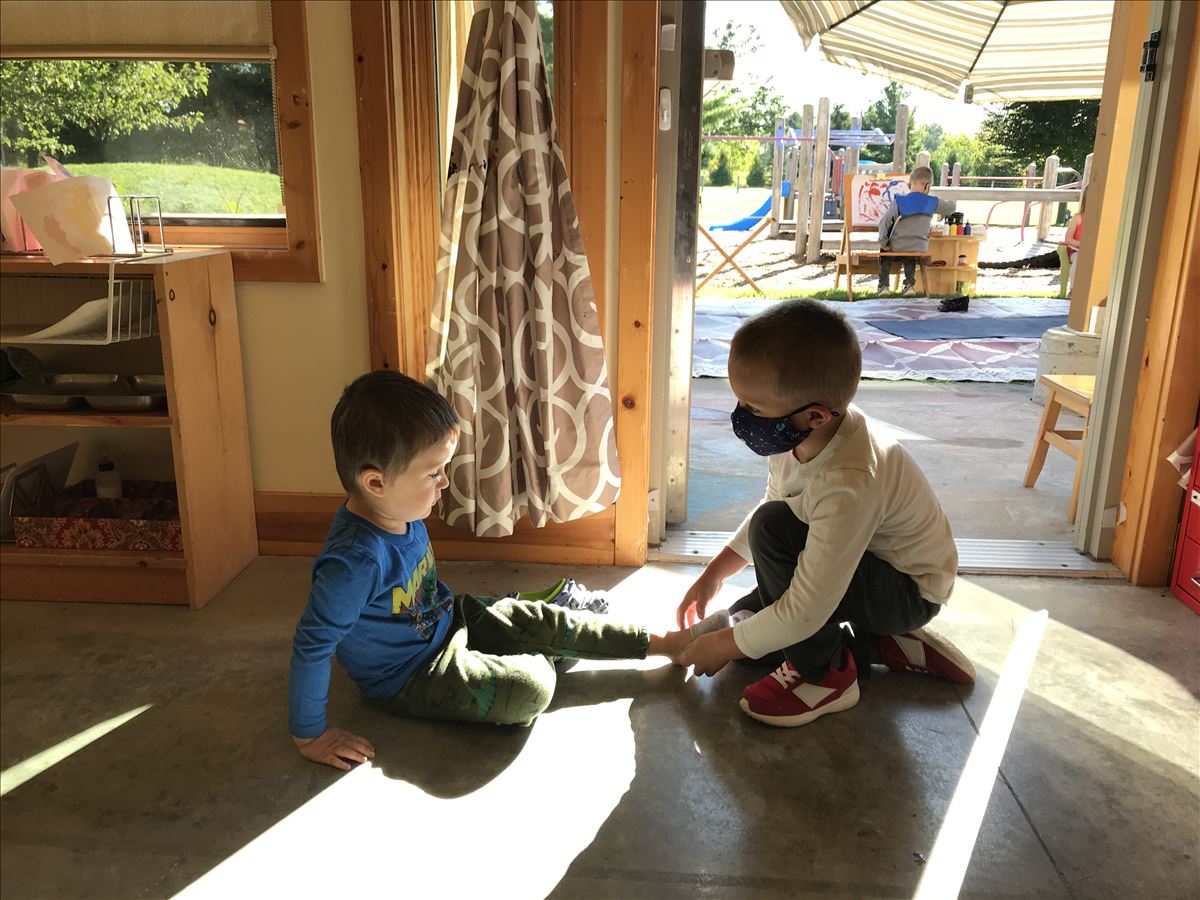When our daughter joined The Children’s House at sixteen months, one of the biggest takeaways from our initial visit was how very capable she already was at this young age and how, up until that point, we may have been getting in the way of her natural development. As she engaged in a community of children her age and older, we were provided with a glimpse of her trajectory; this exposure to younger and older children and activities were permitting her to develop her skills at her own pace. We loved learning from Betsy how best to support her growth over those years, and she loved learning from her peers and, as she became one of the older children in the class, supporting the younger children in achieving their desired tasks. There are many aspects of the Montessori philosophy that spoke to us when we joined the TCH community fifteen years ago, but one that has always made sense and enriched our lives and those of our children, is the multi-age classroom.
Whether your children start in Nido as infants or in upper elementary as ten-year olds, they will be surrounded by a community of younger and older learners. This structure serves many purposes, such as allowing children in the same developmental stage to learn and grow together at their own pace, fostering a nurturing environment and collaboration among learners, guides and parents, and providing every learner with the opportunity to transform from mentee to mentor, as they prepare for their next stage of development.
By grouping learners with others in their same developmental plane (i.e., 0-3, 3-6, 6-9, 9-12, 12-15), Montessori environments can be tailored to meet the needs of these learners wherever they are in their development. No matter which classroom you observe, the children are provided with the materials and lessons with which to build their skills. Because learners grow at their own pace, the guide can tailor lessons for each child, presenting them at the appropriate time and linking them to areas of the child’s interest, instead of requiring every child to work in lockstep on a fixed calendar. The learners see what their peers are doing and work toward being able to receive those same lessons and acquire those same skills. In lower elementary, the first year child may be on the cusp of reading when they arrive; the third year child may be reading to younger peers to help them gather facts on topics of interest. The multi-age classroom provides greater flexibility for each child to develop on their own timetable in a nurturing, inspiring environment.
The multi-age classroom also provides ample time for children, parents, and guides to truly know each other and focus on supporting each child’s growth in an optimal way. Over the three years that the children stay in a Montessori environment, they make remarkable progress and growth, cognitively, socially, emotionally, and physically. This time together allows the child to see this progress in the work they are able to do when they arrive as compared to what they can achieve and complete during their final year. The guide’s regular meetings and observations reinforce this process and foster increased improvement in skills; it also allows all parties to see when more support may be needed. This collaboration between home and school builds a trusting and safe environment in which the children can take risks and build skills in order to move on to the next phase of their development as prepared as possible.
At each stage, the children reach a moment when it is clear they are ready to move on to the next. When they arrived, however, it may have seemed like they’d never get there. From finally being able to tie shoes to confidently delivering an Opening Speech at the Montessori Model United Nations, over the three year cycles the children grow into who they are meant to be, ready for that next step. Not only does the older children’s assistance with lessons and follow up help the younger children and the guide, it helps them realize how much they have learned, solidifying their knowledge and establishing a confidence in their ability to handle whatever may come their way.
Both of our children are across the road now at the high school where they continue to make the most of the learning environment in which they find themselves. Having grown up in multi-age classrooms, they are comfortable with the wide variety of peers in their classes, on sports teams and in the workplace. They are comfortable approaching adults with questions because they have developed relationships with adults throughout their lives and understand they are there to support them. They also know that learning is a process that takes time and practice and they are able to experience the discomfort of not understanding a concept at first because they know that over time understanding will come. The multi-age classroom of Montessori has prepared them for the multi-age environment of life.

